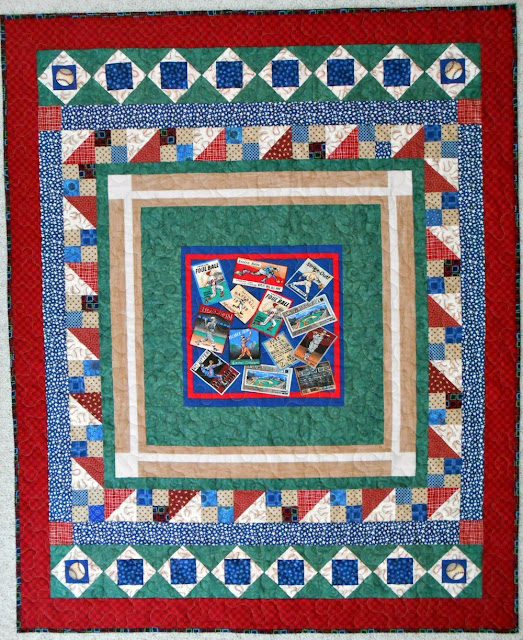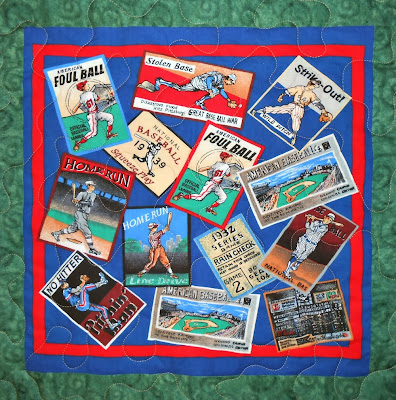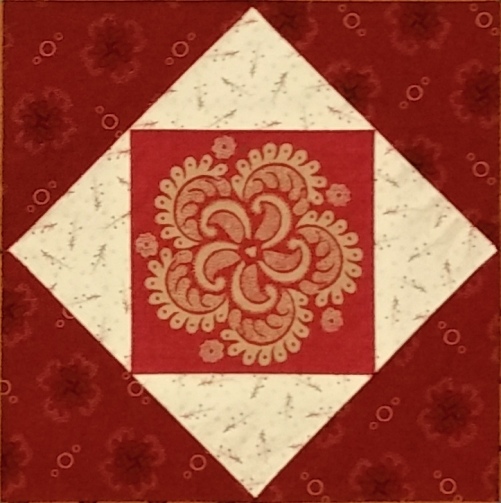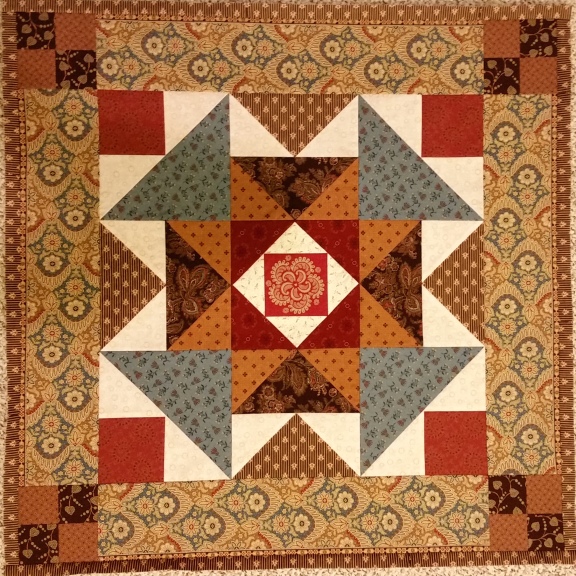Recently I mentioned I’ll be giving away a few quilts. I sent off two on Friday, and yesterday (Saturday) the first one arrived for its new owner!
In July and August I had a few quilts displayed in a local quilt shop. One day my friend BJ met me there to take a look, and to enjoy some time together. BJ and I met 18 years ago (MY GOODNESS!) at the bank where we both worked. We worked closely for several years prior to her retirement, and we’ve remained friends since then.
BJ is a sports fan, and while there were a couple of the quilts she especially liked, I thought this one suited her well. It is named Play Ball! and is 46″ x 56″.

This fun little quilt started from a pillow panel. Several years ago, on my first excursion into our local Mennonite thrift shop, I found two square pillow covers. With their vintage baseball theme and strong blues, reds, and greens, likely they were used in a boy’s bedroom. Besides the square(ish) panels on the front, the envelope closures on the back were lined with small baseballs on navy blue.

I used one panel to inspire a baby quilt for my youngest grandchild. (He is going on 5 now, so not a baby anymore.) It uses the Burgoyne Surrounded block on the front and the pillow panel to center the back.
But I still had one panel left. With a nice range of color and value, I continued the baseball and All-American theme.
The dark green tone-on-tone framed the panel to represent the grass of the infield, and then I mimicked the baseline and bases in the corners with cream and tan. Spark and movement comes from the simple border of 4-patches and half-square triangles.
The busy stars print frames all that, followed by borders only on top and bottom to elongate the quilt. This border uses the “economy” block, or square-in-a-square, described in this tutorial. I was able to use four of the fussy-cut baseballs for the corner blocks. Finally I framed the whole thing with red. This gives a balance between the red, navy, and green in the center panel.
I enjoyed making this quilt. I have a feeling BJ will enjoy watching her baseball playoff games and quite a lot of football snuggled under this lap quilt.



















